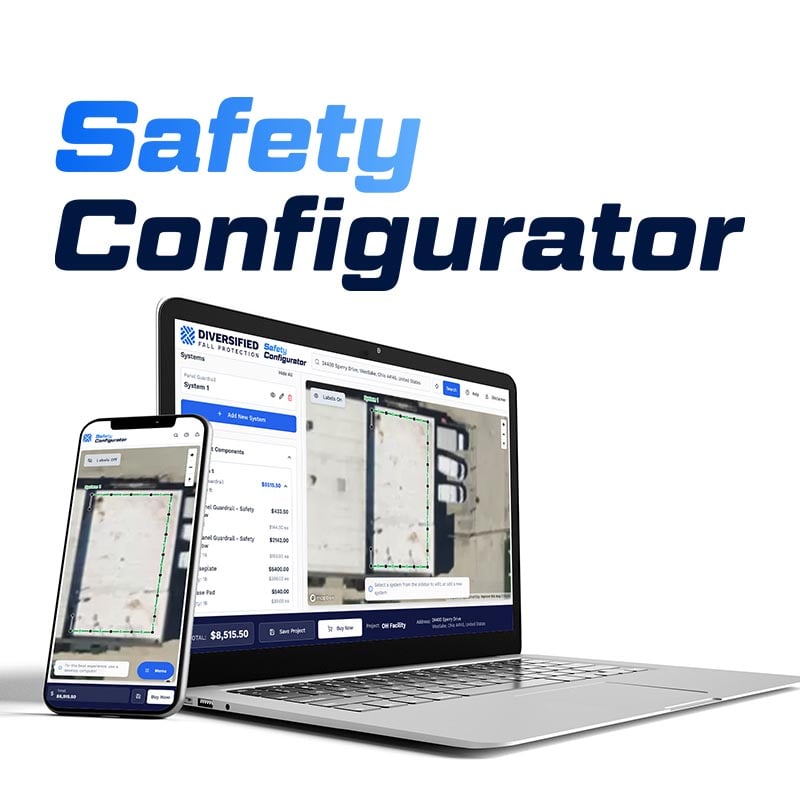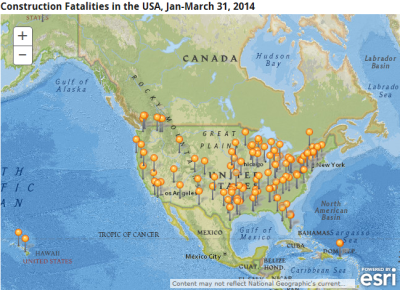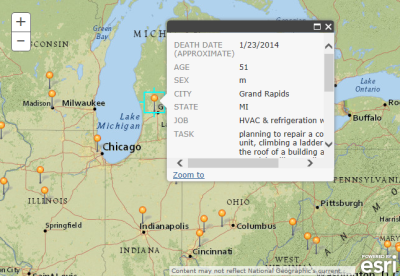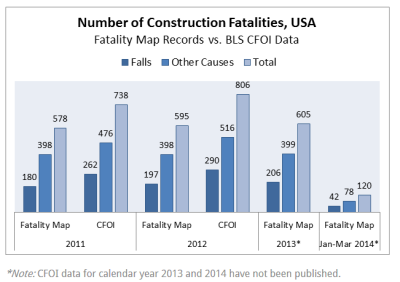Fatality Mapping Project: Fall Protection & the Construction Industry
The Fatality Mapping Project is a national initiative to raise awareness of lives lost each year in construction related accidents. For over three years, this project has created maps providing detailed information regarding construction deaths. As the images below suggest, interested parties can learn about a particular accident by clicking a map pinpoint.
The maps do more than simply pinpoint location and describe the OSHA findings as they relate to each accident. The data collected by the Fatality Mapping Project also speaks to leading cause of construction related deaths—falls. Each year, more than 200 U.S. construction workers are killed and over 10,000 are seriously injured by falls.
The collected information does a good job raising awareness of the potential fall hazards associated with the construction industry, but how can we make building sites safer? What follows is not a comprehensive list of strategies, but rather, some key starter concepts to help create safer construction sites.
Remember your ABCD’s—In a previous post, we discussed the key components of a fall protection system. Whether you work at heights in general industry or the construction market sector, the basics of fall arrest remain constant: Anchorage, Body Harness, Connecting Device, and Descent/Rescue. The rescue and descent component is of paramount importance due to the nature of construction sites, which are often difficult for emergency 911 personnel to access.
Emphasize Ladder Safety–Falls are the leading cause of death in the construction industry, and every year, falls from ladders contribute to nearly 1/3 of these deaths. remember to use the right ladder for the job and maintain three point contact at all times . Click on the link below to view a training video on ladder safety:
Maintain 100% Tie-Off When Working At Heights–There is a common misconception among individuals employed in the building trades that tying off is a time-waster, or that wearing a body harness and connecting to a temporary lifeline reduces productivity. Although putting on a body harness does take a few extra minutes, this simple step may save your life. What’s more, properly installed temporary HLL’s provide ample range of movement, allowing workers to maintain 100% tie-off at all times while performing job duties in an efficient manner. A momentary lapse of concentration or a simple misstep can have catastrophic consequences when working at heights—don’t become a statistic.
Conclusions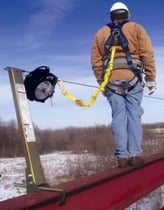 Unlike general industry applications with clearly identifiable, permanent fall hazards, the dangers posed by construction sites constantly change as work progresses. Working at heights is also very much part of the normal routine in the building trades as well. For these reasons, there is even a greater need to have the proper training and systems in place to reduce the likelihood of accidental falls and fatalities. Don’t let the complexities of construction related fall protection requirements prevent you from seeking help. To discuss your fall protection requirements, request a site assessment, or learn more about preventing construction falls, contact Diversified Fall Protection for more information today.
Unlike general industry applications with clearly identifiable, permanent fall hazards, the dangers posed by construction sites constantly change as work progresses. Working at heights is also very much part of the normal routine in the building trades as well. For these reasons, there is even a greater need to have the proper training and systems in place to reduce the likelihood of accidental falls and fatalities. Don’t let the complexities of construction related fall protection requirements prevent you from seeking help. To discuss your fall protection requirements, request a site assessment, or learn more about preventing construction falls, contact Diversified Fall Protection for more information today.
Schedule an assessment with Diversified Fall Protection
Contact Us to request a fall safety review

b-1.jpg?width=1368&height=1340&name=Rail%20(175)b-1.jpg)

